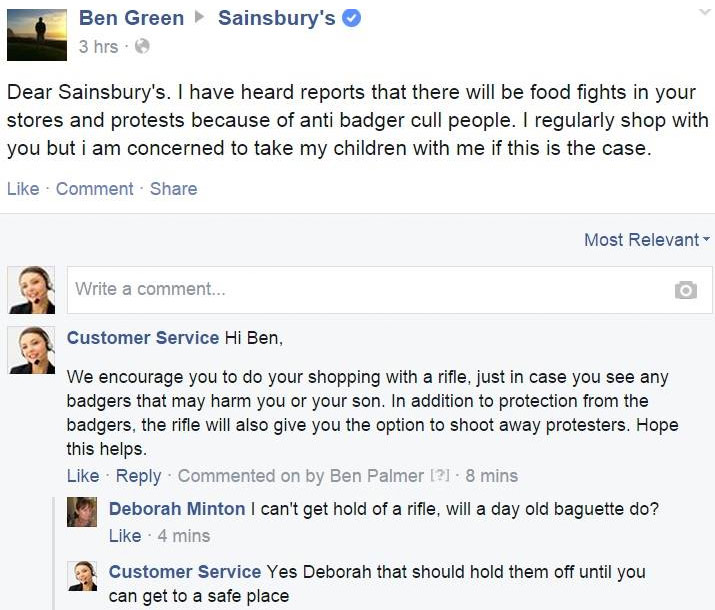The customer service game is changing fast. Just a few years ago, almost all support issues were resolved via phone or email. Today, social networking and online tools like live chat and help-desk software have opened up all sorts of new avenues for customers to reach out to you for help. These new customer service channels can be hugely beneficial to both you and your customers, but they come with risks to mitigate and decisions to make.
Today’s consumers don’t always want to pick up the phone or open an email. They may find your business on Facebook or Twitter and send you a message about a question or problem they have. They might be on your site looking for a way to send a message or open a live chat. If they can’t find a reliable way to contact your support team, customers with dilemmas blocking them from purchasing may abandon your site out of frustration.
How can your business be expected to juggle all of these different support channels? Should you even attempt to offer support through all of them? The reality of the matter is that you should probably only choose to support the best channels for you and your customers’ needs, rather than spread yourself too thinly trying to cover all of the possible avenues of customer support. With that in mind, here are some quick comparisons and contrasts between the top customer service channels to help you choose the right ones for your business.
Comparing popular support methods
Phone

Millennials report a preference for phone support
Phone support might not be the newest, sexiest way to talk to your customers, but you might be surprised to know how many of them expect to be able to call you. According to a few different studies, phone calls still account for more than two-thirds of all customer service interactions with small businesses. Even the stereotypical notion that younger consumers don’t like to use the phone largely doesn’t apply to customer support, as millennials report a preference for phone support at about the same rate as baby boomers.
However, phone support is a pretty tough pill to swallow for growing businesses. There’s no way to delay a support ticket and put it in a daily queue — phone callers expect to be on hold for no more than a few minutes before being connected to someone who can solve their problem. Phone support is nearly impossible to multi-task: if a support representative is on the phone with a customer, their hands are pretty much tied until the call is completed.

Everyone knows how email works, and almost everyone (about 91% according to a survey by ExactTarget) uses email every day. It’s comfortable, familiar, and accessible from a wide range of devices, which makes email attractive for both the customer and the support team.
If you don’t offer email support, there’s a good chance that you’ll frustrate a chunk of your audience
Business media has talked a fair bit about the death of email. Many businesses big and small are dropping email support in favor of other channels. This is likely due to the relatively high amount of time needed to handle each individual support issue, since they tend to involve several back-and-forth emails over a period of time.
However, the reports of email’s death have been greatly exaggerated. While it is no longer growing at the same pace as newer channels like live chat and social media, email is still one of the most common and most preferred method of reaching a business’s support team. If you don’t offer email support, there’s a good chance that you’ll frustrate a chunk of your audience.
Social Networks

Arguably the fastest-growing method of customer support is one that a lot of business owners wouldn’t expect to be a method of support at all: their business’s social media profiles. Your customers use Facebook, Twitter, and other networks every day to connect with their friends and family, and they’re quickly discovering that it’s an effective way to connect to businesses as well.
This is a great way to boost your brand’s image as a customer-first business
Social media users are comfortable with the platform and interface, and they can expect to see fast responses from brands they follow. Since other followers can see the support exchange between the customer and the support team, this is a great way to boost your brand’s image as a customer-first business. Those spectators can often also get answers for questions they might otherwise ask themselves, saving your business valuable time by avoiding that additional support interaction.
Live Chat

Live chat is quickly becoming the new standard for customer service
The simplest way to offer support to someone visiting your site is to offer them help right on the page they’re browsing. Just click here to start chatting with a representative. It doesn’t get any easier than that. Live chat is quickly becoming the new standard for customer service. It’s accessible, functional, and responsive. What’s not to like?
One of the biggest benefits for support teams using live chat is that the chat software is often able to give the responder some valuable information about the customer. Being able to see where the customer is from, what browser or operating system they’re using, and which pages they’ve visited can help with resolving their issues faster.
Not only is live chat a powerful and scalable support method, but a proven sales tool as well. Inviting shoppers to a chat is shown to greatly increase their conversion rate and average order value. Just make sure that the team members answering the live chats know what they’re talking about – if the customers are given the wrong information or an otherwise poor experience, it’s easy for them to keep the chat log as evidence…or share it online!
How to choose the right channels
Is your head spinning yet? There are so many ways for customers to reach you, it might seem impossible to manage all of them. To be fair, it is extremely difficult to have a support team juggle phones, emails, live chats, and social media pages. If they did, it’s pretty much a guarantee that support tickets will be delayed or dropped in the chaos.
You definitely don’t want to put your support team in a position where it’s easy for them to drop the ball on a customer. Surveyed customers are substantially less likely to continue doing business with a company, or to recommend them to others, if their first support contact goes poorly.
The smartest way to avoid a subpar customer service experience is to focus on providing a strong experience in just a couple of support channels. While you don’t want to limit your customers to only one way to reach you, you can more effectively streamline your support method through a couple of routes than you could with a ton. But which customer service channels are right for your business?
The answer to that lies with your customers. Knowing the target audience of your business can help you choose with support methods best fit their needs and expectations. For example, consider your audience’s average age range: younger consumers tend to prefer social media and live chat for support, while older shoppers or businesses would generally rather pick up a phone.
Lastly, don’t ignore self-help support methods. Implementing an FAQ, knowledge base, or other method of answering common questions on your site can help reduce the need for support contacts. These resources also make it easier for support representatives to point customers to the answer they need: instead of repeating the information to customers over and over again, you can simply give them a link to the relevant support article.

